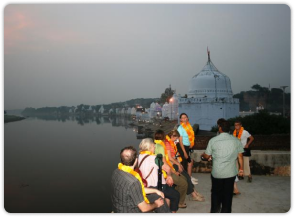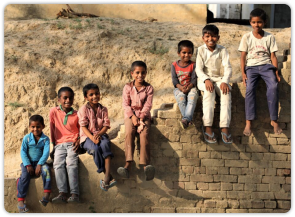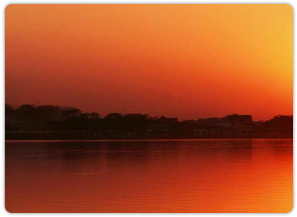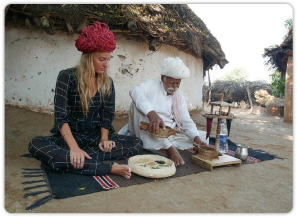Get Support
123-456-789-10
Village Tour
Once you are done going on a boat and jeep safari, you can say that you have seen most of the species on that piece of land as well as water; now it’s time you explore the area around this sanctuary and experience and feel the villages that are present in and around this sanctuary. The village safari will provide you with an insight into the lives of the people living in those rural villages. Take a stroll through those villages to see the lifestyle of the villagers; you can watch them do pottery, make handicrafts, make different cloths and after you are done, you can stop by at the small stores in the villages that sell sweets, jiggery, locally made handicrafts etc. In fact, the pride of the people here in their homes and culture is worth emulating. The village tour will take you into the many bylines, each of which have some fantastically carved doors that make for Instagram-worthy images. And if you thought Chambal was all about dacoits, think again, there is much more to explore here. The classical name of Chambal mentioned in ancient texts is “Charmanvati”. “Charman” means skin or hide of the animals. One story attribute it to a King called Rantideva who sacrificed many animals here and turned the river red.
A more mundane explanation maybe that the hides were dried on the banks of this river in large number and maybe this was a flourishing trade. In any case, blood and violence remained attached to this region even during the historical times. In the Middle Ages too, this area was known for lawlessness, but they caught publicimagination in the 20th century as the stories of the bandits made its way to popular culture through books, news reports, and Bollywood films.
Why its exciting to visit chambal village
In March this year, Abhishek Chaubey’s Sonchiriya saw Sushant Singh Rajput and Bhumi Pednekar essay roles of dacoits based in Chambal. Yash Raj Films too jumped on the bandwagon and announced that Shamshera will see Ranbir Kapoor play a bandit. Chambal has been the shooting spot for films such as Bandit Queen, Paan Singh Tomar and Phamous. However, our driver dismissed all dacoit talk saying they did not exist any more and instead regaled us with tales of the ichchadhari nagin that are well-known in Indian folklore. For the uninitiated, these are shape-shifting snakes that can assume different forms, including that of a human, and are known to be vengeful when betrayed. You can explore different vibe of Chambal dacets and many old sculpture out there.
Jarar village
While most Indians have seen the films, I acquired more information about Chambal during my school days when I came across a book called “The Accursed Chambal” by Tarun Kumar Bhaduri (Yes, most Indians will know his daughter). It described the lives and times of the best known Chambal bandits of 50s and 60s such as Maan Singh, sort of a local Robin Hood, Roopa Maharaj who was also an astrologer, Lakhan Singh who came back every Diwali to kill the family members of his sworn enemy, Gabbar Singh (not the reel one) who cut-off people’s noses and offered them to his deity, and Putli Bai, a proto-Phulan Devi who continued to terrorize the valley even after losing one hand, and many more! Others may call them bandits but they called themselves “baaghis” (rebels) and enjoyed cult popularity. Maan Singh and Roopa still have temples dedicated to them.
Itinerary
- We will collect you from the separate cottage and head eastwards. After almost some distance of travelling, we will reach the archaeological site of Bateshwar.
- On the banks of the river Yamuna extends a complex of more 50 houses there, they are there from almost 100 years
- We will find out about the origins of these shrines, some of which are still in ruins after being abandoned for over six
- When the visit has finished, we will transport you back to your
Duration
We can also vist village by walking by self. It took almost 3 hour to 5 hour visit.
Monuments to be experienced there
- Chambal village
- Chambal culture
- Chambal ancient people
- Chambal traditional temple
- Chambal old houses




